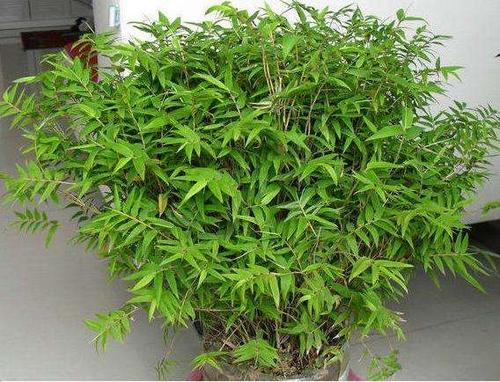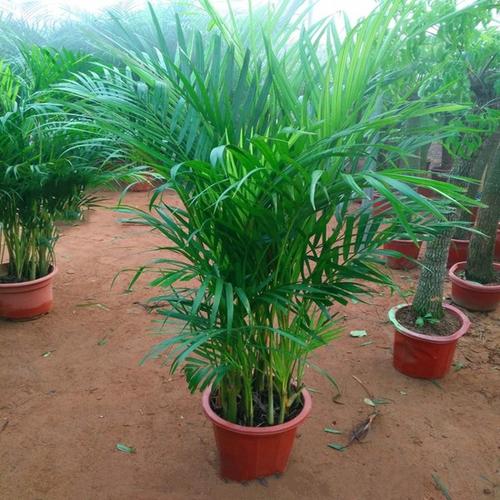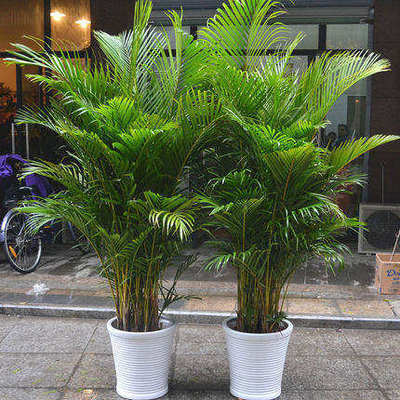Bambusa multiplex profile
Written by Maggie
Jan 11 2021

Bambusa Multiplex is a cluster of plants with slender, drooping leaves. It has a chic charm like the tail of a phoenix. Bambusa Multiplex is often used as garden bushes or bonsai plants, with rocks and decorations, which is quite interesting. As the saying goes, if there is water in the mountain, then there is spirit. If there is a Bambusa multiplex, then there is spirit.
Bambusa multiplex picture

Morphological characteristics of Bambusa multiplex
Bambusa Multiplex stalk is densely clustered, short and thin but hollow. The culms are 1 ~ 3m high, 0.5 ~ 1.0cm in diameter, with drooping branches and leaves. Each branchlet has 9 ~ 13 leaves. The leaves are small, about 3 cm long and 0.4 ~ 0.7cm wide, and are linear-lanceolate to lanceolate. Often 20 leaves are arranged on either side of the branch, pinnate. On the whole, the branches of bambusa multiplex are slim. Due to the heavy burden on the top of the bamboo pole, the branches and leaves of the Bambusa multiplex hang down like the tail of a phoenix, looking like a young girl with her head bowed in shame, silent.
Bambusa multiplex growth habit
Bambusa Multiplex likes sunny and semi-cloudy environments, suitable for acidic, slightly acidic or neutral soil, wet and avoid water. Spring, summer, autumn 3 seasons are growth active periods, and it needs to be placed in window ventilated places only. When entering winter, it is to be placed in a sunny place, and it can grow well.
Bambusa multiplex distribution area
Bambusa Multiplex is originally produced in Guangdong, Guangxi, Sichuan, Fujian and other places in China. With the change of time, Bambusa Multiplex has been widely distributed in East China, South China, southwest China, Taiwan, Hong Kong and other places in China, and it is also cultivated in Japan and India.

Bambusa multiplex propagation methods
Bambusa Multiplex, as a kind of bamboo, has a relatively simple breeding method. In gardens, female Bambusa is usually transplanted (divided into subsoil and planted), and can also be propagated through subsoil, culms and nodes. The mother plant should be planted in time, before planting to apply sufficient base fertilizer, to ensure adequate nutrition, after planting to pour sufficient root water.
Plant division propagation: It can be carried out in early spring (2-3 months) when combined with basin changing. When dividing plants, the plants that grow too densely will be poured out of the basin, from the root stem with a knife cut, another basin. Be careful not to hurt roots. When cutting, at least one old bamboo should be attached to each shoot, and the fibrous root should be kept as much as possible, in order to ensure survival. New plants should be planted in a pot of moderate size to cultivate fertile soil. Pay attention to irrigation, keep wet, placed in the semi-shade for curing, shoots will grow rapidly.
The main value of Bambusa multiplex
1. Ornamental function: Bambusa Multiplex is a cluster of Bambusa Bambusa, which is fixed and grows in place without spreading into pieces. It is suitable for planting in the corner of the wall, the corner of the house and beside the door in the courtyard, elegant and unique. The Bambusa Multiplex with a small plant can be planted on the flower table, or make bamboo bonsai, and also planted in the temple garden. In the south, Bambusa Multiplex is also widely used as a planting material for low hedges.
2. Medicinal value:
Bambusa multiplex is used for external fever, delirium and delirium, hand, foot and heart heat, upset, urination adverse, drenching.

Latest Updated
- Benefits of Bugleweed - 7 Science-backed Health Benefits
- Bugleweed Dangers & Side Effects - Is It Poisonous?
- How to Plant Evergreen Trees - What You Should Know
- When to Plant Evergreens - Grow Guide for Evergreen Trees
- 12 Wonderful Evergreen Shrubs for Your Garden
- 12 Popular Evergreen Plants with Pictures for Beginners
- When And How To Prune A Lilac Bush Like a Pro
- How to Grow & Care for Lilac Vine (Hardenbergia Violacea)
- Japanese Lilac Tree (Syringa Reticulata) Care & Propagation Guide
- Shumard Oak Pros and Cons - What to Know
Popular Articles
- Winter maintenance of Antirrhinum Majus
- How to Grow Terminalia Mantaly Tree
- How to Grow and Care for Crossostephium Chinense
- How to grow Antirrhinum Majus in spring
- Peristeria Elata (Dove Orchid) Profile: Info & Care Guide
- Underwatered Snake Plant (Sansevieria Trifasciata) - Signs And How To Fix
- How to Care for Brazilian Jasmine Plant (Mandevilla Sanderi)
- How to Grow & Care for Graptopetalum Purple Delight in Summer
- Rosa Chinensis (China Rose): Plant Growing & Care Tips
- How to Care for Baby Sun Rose (Aptenia Cordifolia)